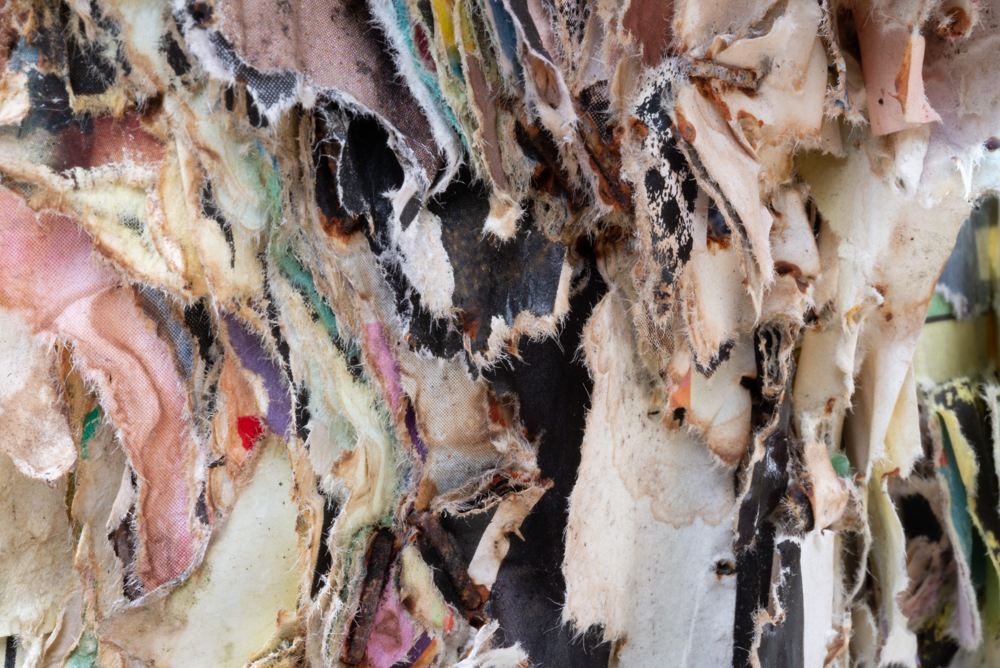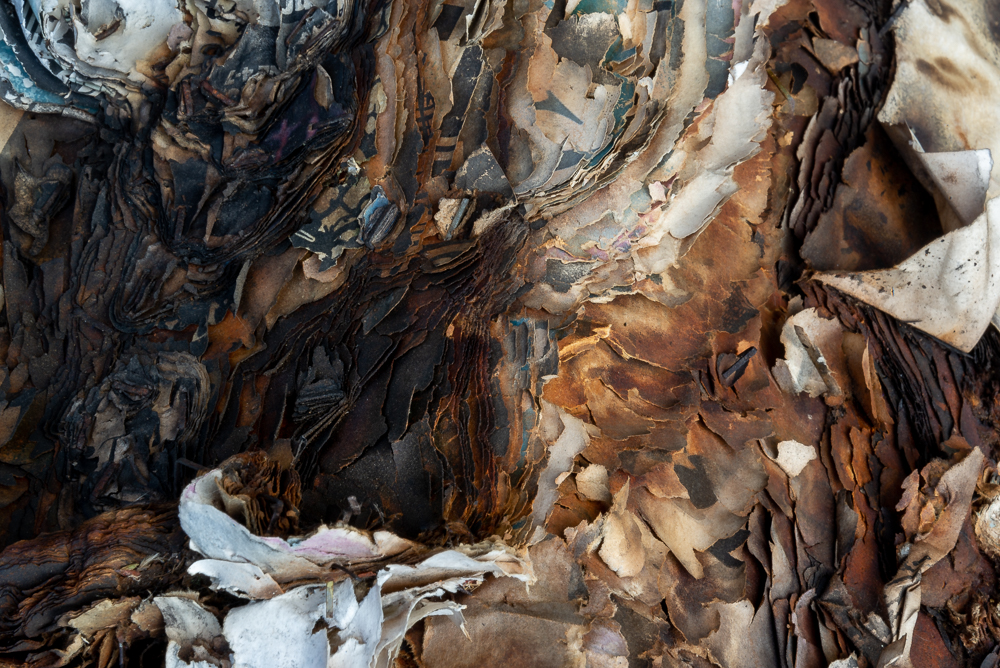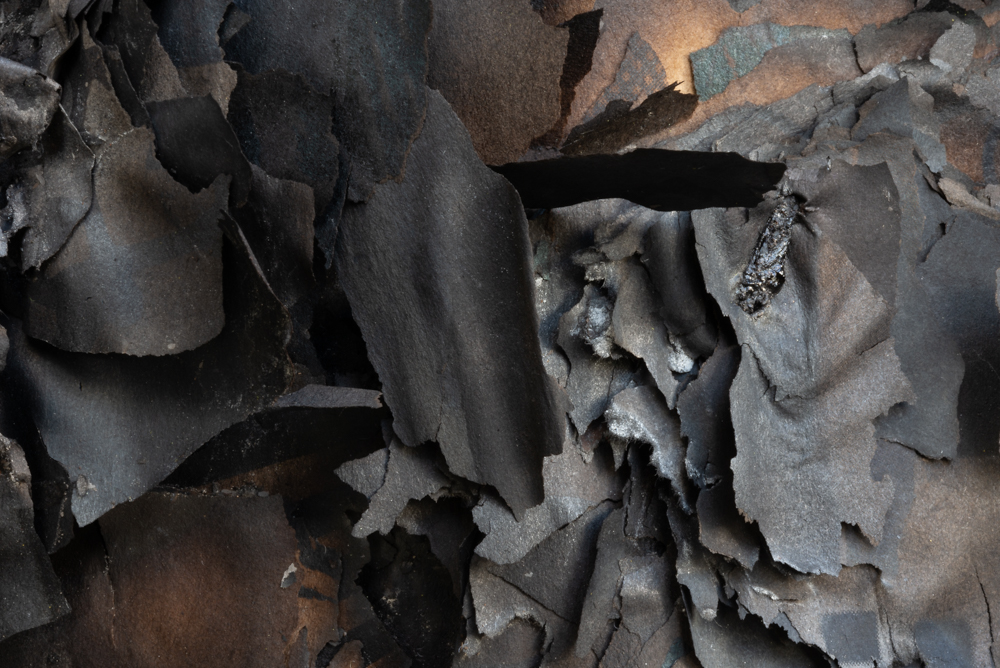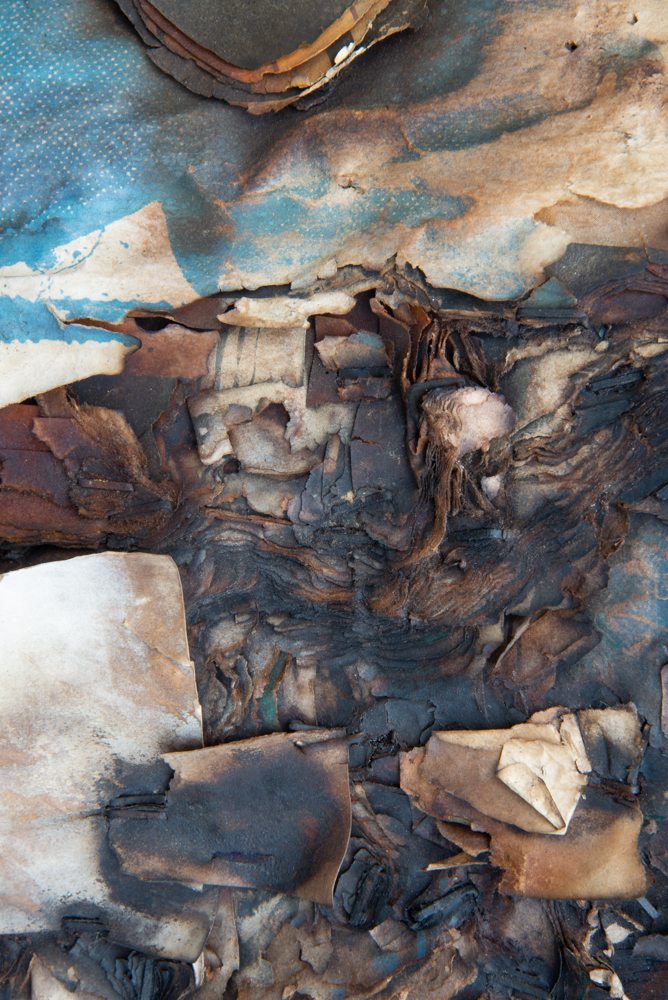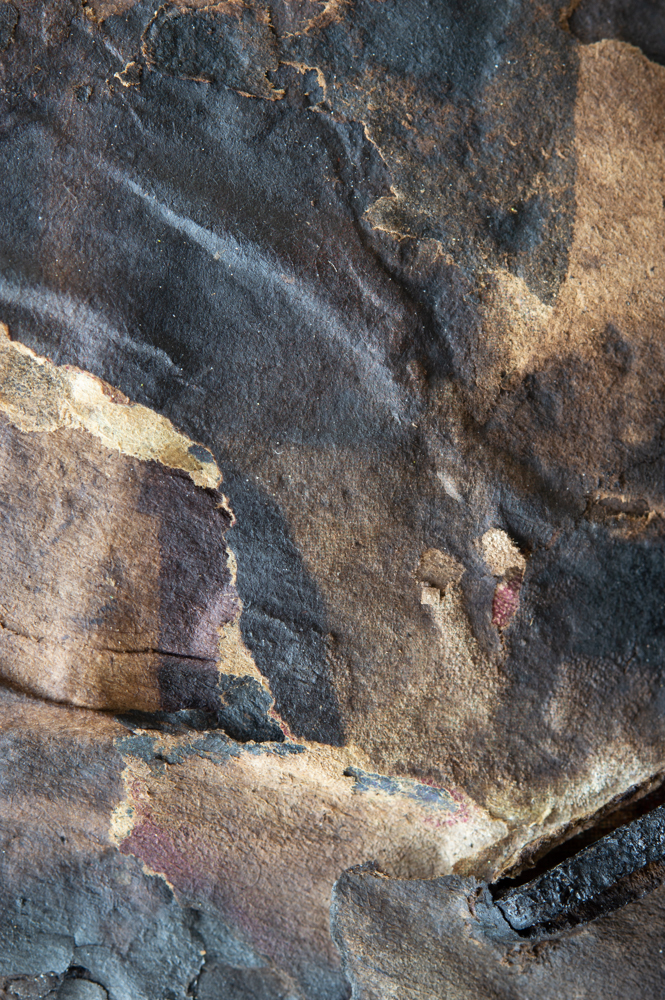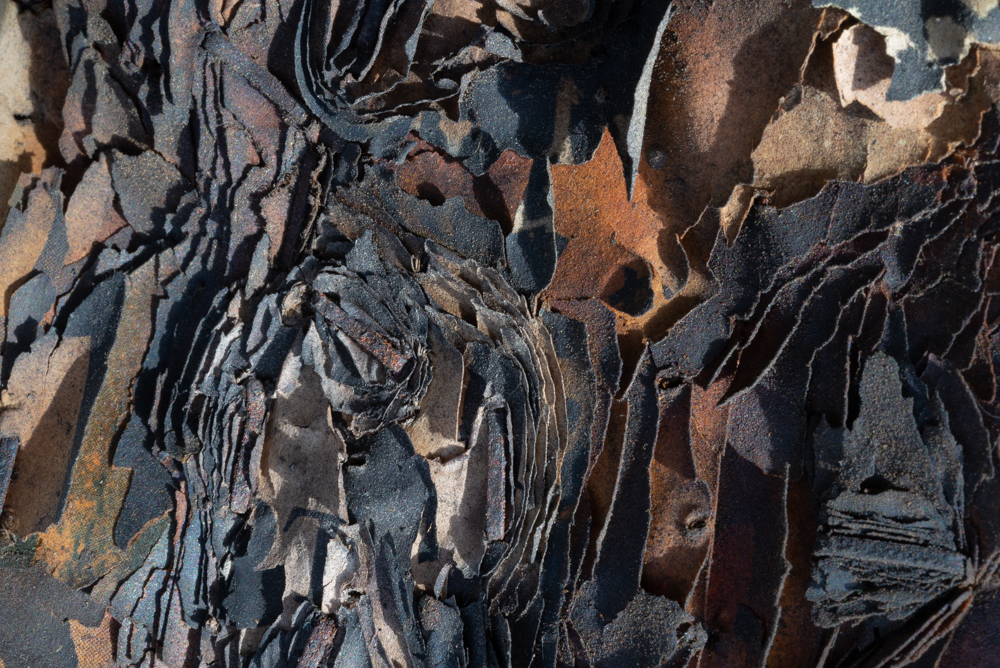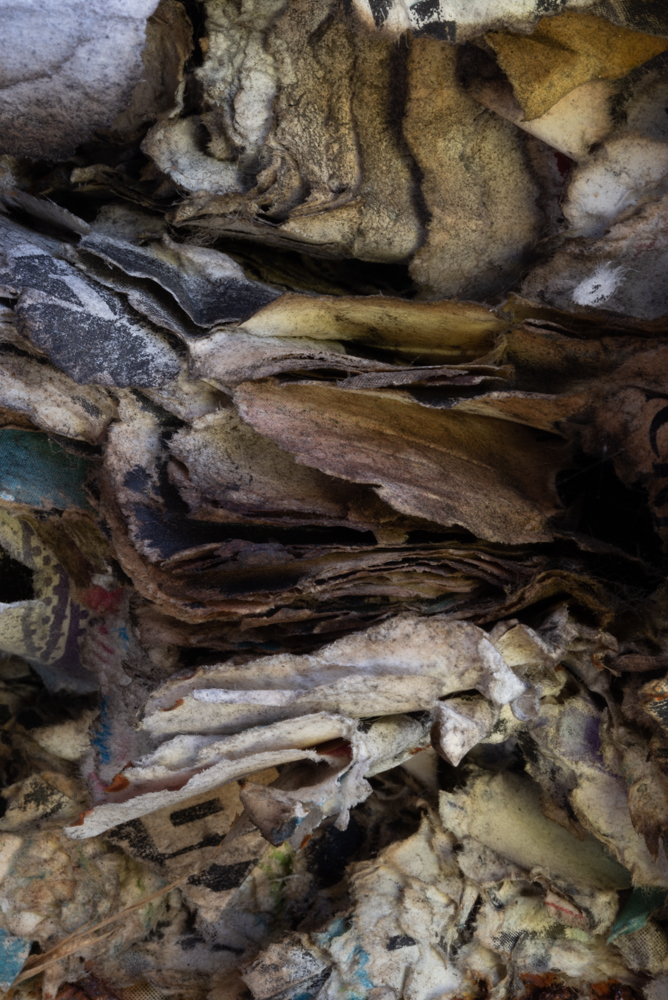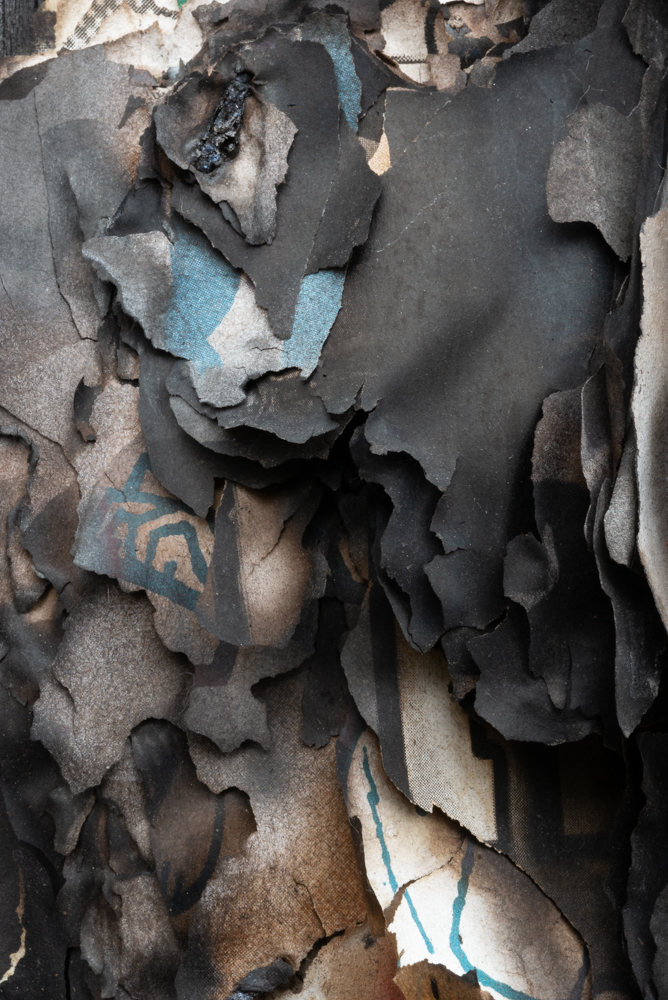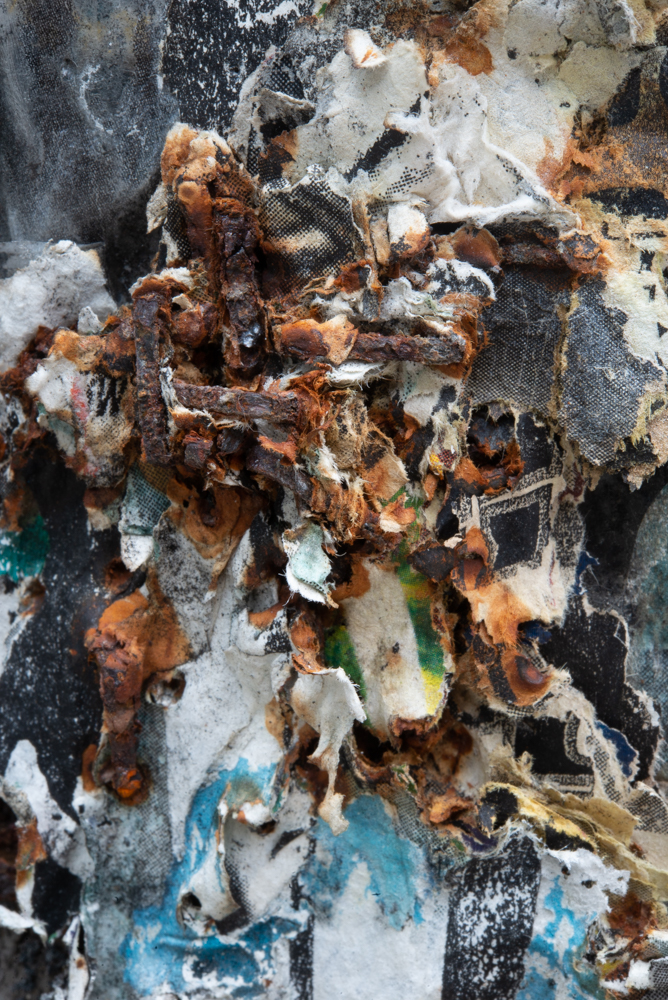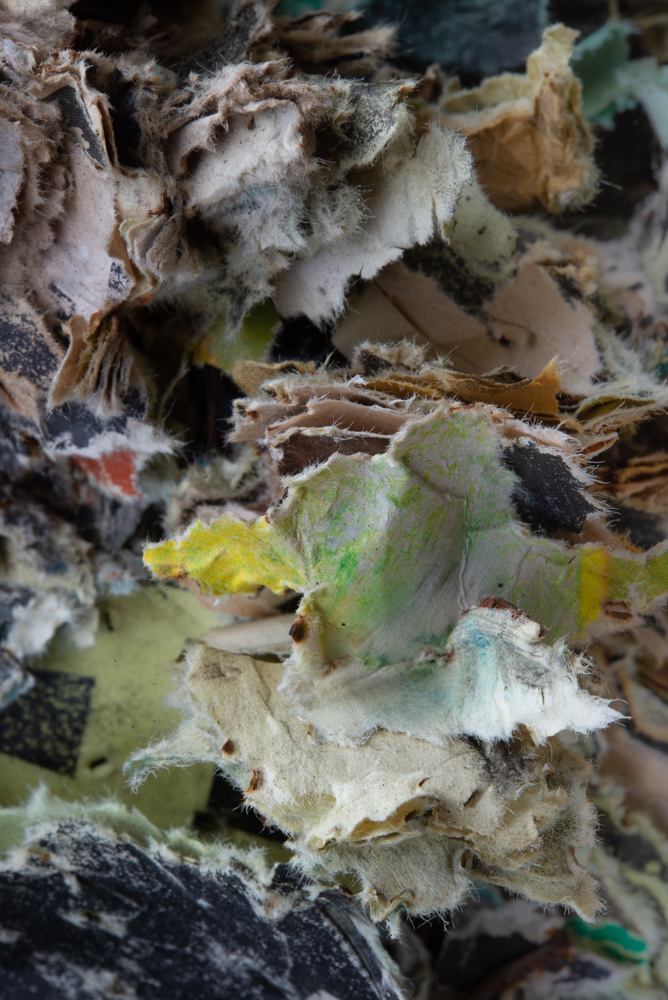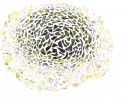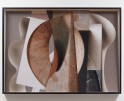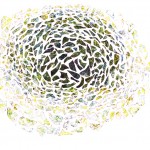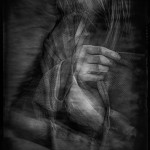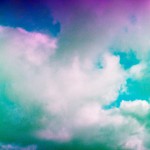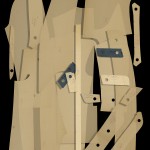PROOF: Heléna Dupre Thompson: Bridge City Diary
This week we are considering projects that all provide a form of proof. Each artist considers the idea of proof from a different perspective.
When presented with the work of Heléna Dupre Thompson, initially I was unsure what I was looking at. Because we are living in a time of personal and environmental disasters, my mind went to a place of destruction, of fire or flood. But interestingly, the work is about history, in particular, the history of sharing information in unlikely places. Thompson has photographed layer upon layer of detritus left by artists and musicians leaving flyers on utility poles around Portland, Oregon. Like an archaeologist looking for proof of existence, she examines the past, through layers of lost histories. These explorations of communication strata, take on a painterly expression when removed from signifiers of place and reality.
Heléna Dupre Thompson is a visual artist and musician based in Portland, OR. Her visual work explores ideas of beauty through archeology, mark making, history and the detritus of contemporary civilization. It centers around the spectacles that manifest when human made objects and materials transform as a result of time, action, and forces of nature. Sometimes apocalyptic and sometimes optimistic, her images reflect the mood or state of the environment they are taken from.
Heléna’s upbringing in an industrial area of Providence R.I., and career as a firefighter have had a great influence on her work and her way of seeing. She spent her early years mostly focusing on music and touring the United States and Europe.
In 2002, she founded Purest Spiritual Pigs; an umbrella project that involves collaboration in multiple genres: music, performance art, visual art, and time-based art. In 2014 she retired from the Minneapolis Fire Department to pursue art full time.
She was an original resident artist at AS220 (community art center) and has returned intermittently for projects and residencies. In 2016 she founded Surveillant, a multidisciplinary event that involved thirty artists and occupied three AS220 buildings. Surveillant is now an annual event for AS220 during the PVD Art Fest.
Her work has shown throughout the US and internationally.
Bridge City Diary
The Bridge City Diary series is a five-year, ongoing study, examining Portland’s street utility poles. These poles have served as sounding boards for community to advertise poetry slams, bands, LGBTQ+ events, art gatherings, and laborer services. They’ve been utilized to speak out against racial inequities and to advocate for affordable housing. They absorb the forces of nature and the physical expressions of Portland’s population- scribbling, ripping, torching, spitting, etc. In addition, these paper landscapes are targets of removal in an attempt to “clean up the city”. These efforts to clean and control add to the constant change and tension of these communal canvases.
What initially drew me to the utility poles was their variation of color and texture. By continually returning to study and investigate these ever-changing surfaces, I’ve been able to discover the deep, rich history and soulfulness of this collective diary that otherwise might appear as a chaotic jumble of trash.
With photography, the human brain often wants to identify the subject in a photograph. My intention with these photographs is not to document, identify, or tell a story of the people or contents involved. Instead, it is to distill all of the converging factors into an image that contains the history and energy of the original subject, but that stands unbound from practical understanding of its origin. -Heléna Dupre Thompson
Tell us about your growing up and what brought you to photography?
I grew up in an industrial part of Providence, RI. As long as I can remember I was always interested in art. I messed around with drawing a little but never got very serious about it. When I was around twelve, one of my older brothers had gotten a camera and set up a dark room. Seeing him use photography as an artistic medium inspired me to cobble together my snow shoveling money and buy a 35 MM Yashica film camera. The camera enabled me to explore and express myself artistically without formal instruction. I began experimenting with all subject matter but the stuff I gravitated to the most was abstraction.
This week, we are featuring projects around the idea of PROOF. Is that something you considered when creating Bridge City Diary?
Conceptually, history and archaeology play a large part in this series, and in much of my work as a whole. I can’t say that the word “proof” came into my consciousness while working on Bridge City Diary. However, when I think of archaeology, diary/journaling, and history, proof is definitely an element within those subjects. Like the materials found at an archeological dig, the layers contained within Bridge City Diary are proof of events, actions, and time passing in contemporary civilization.
Over what period of time was the work created? Do you happen upon the work, or go exploring for it?
As a musician I have hung my fair share of band posters and, therefore, have contributed to these public canvases in multiple cities in the US. This subject matter intrigued me long before I started photographing it, but I wasn’t in a place artistically where I knew how to approach it. What helped me get there was a similar series I started in 2014, titled East West Poles (still on-going). With that project, I photographed the residue left on utility poles after the posters had been removed. Although that work looks much different from Bridge City Diary, it helped me gain a purchase point into the BCD series. I started working on Bridge City Diary six years ago. Because these surfaces are everchanging, I’ve been able to continue photographing and refining the series.
So many of your series bring a particular beauty to detritus, what draws you to this subject matter?
My upbringing in an industrial neighborhood and my career as a firefighter have definitely influenced the way I look at my surroundings and the way that I look at life.
I’ve always been a visually stimulated person. Growing up in a neighborhood of oil tanks, shipyards, factories, and scrap metal has helped me to see the potential intrigue and beauty amongst things that are often seen as undesirable or unsightly. My firefighting work exposed me to this even more. Incidents that are destructive often have surreal and dynamic visual qualities. I find that detritus and things of that nature can also contain similar otherworldly qualities.
My overall subject matter is seen by many as messy and something to be fixed or cleaned. To me these subjects contain history, soulfulness, and energy. This type of subject matter also appeals to my interest in abstraction. I just have to explore the different dynamic qualities of each subject to extract a composition that works for me.
An funny story pertaining to this, is when my partner coerced me into going to Disneyland. It sounded like the last place I’d ever like to visit, but I figured it could be an experiment. I thought for sure I would be able to find something to photograph. Sadly I was wrong. Everything there was much too perfect and squeaky clean, like it had been built that day. I have no doubt that there are photographic offerings to be had at Disneyland but definitely not for this type of work.
Who or what is inspiring you lately?
2009 is when I began to produce images the way that I saw them in my minds eye. Over the years I’ve been able to understand more about what I’m doing with my visual work and how to obtain that. I feel fortunate that I’m now in a place where the work that I’m doing is generating ideas and inspiration for me to keep reaching forward.
I bike as my primary mode of transportation, so it gives me more opportunity to observe the landscape around me. My trips are often sidetracked by fodder for the next project.
What’s next for you?
Layering of action and activity upon material is everywhere and it looks and represents differently in every situation. I’ll be digging at this type of subject matter for a while, but I’ll continuing to explore it in different contexts.
Also, I recently took a printmaking class and I’m experimenting with mixing my photography with printmaking techniques. Besides the fact that printmaking is such a cool process, I love the idea that working this way can add yet another layer of history to my subjects.
Posts on Lenscratch may not be reproduced without the permission of the Lenscratch staff and the photographer.
Recommended
-
The Female Gaze: Alysia Macaulay – Forms Uniquely Her OwnDecember 17th, 2025
-
Bill Armstrong: All A Blur: Photographs from the Infinity SeriesNovember 17th, 2025
-
Robert Rauschenberg at Gemini G.E.LOctober 18th, 2025
-
Erin Shirreff: Permanent DraftsAugust 24th, 2025
-
Shelagh Howard: The Secret KeepersJuly 7th, 2025


